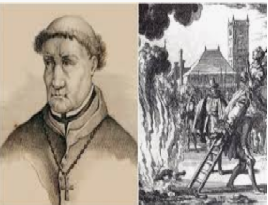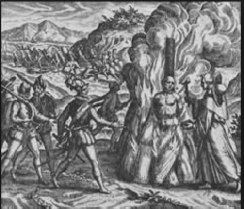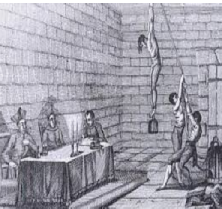|
PART 1 T O P I C |
|
|
|
|
|
|
|
|
|
|
|
|
|
|
|
|
|
|
|
CLICK BUTTON |
|
|
|
|
|
|
|
|
|
|
|
|
|
THE INQUISITION AND THE |
|
|
|
|
JewishWikipedia.info
JEWISH FAITH AND THE INQUISITION
Name Your Roots
Jewish achievements throughout history have been substantial and remarkable by all accounts. Jews are consistently included in disproportionate numbers among history's greats in the domains of science, invention, education, politics, law, medicine, visual and performing arts, industry, philosophy, entrepreneurship and finance. These include figures like Albert Einstein, Sigmund Freud, Karl Marx, Jonas Salk ,Albert Sabin, Baruch Spinoza, Marc Chagall, Irving Berlin, George Gershwin, Leonard Bernstein, Steven Spielberg, Arthur Miller, Herman Wouk, Philip Roth, Houdini, to name only a few. Over 20% of all Nobel laureates to date have been Jewish. So how many Jews do you think there are throughout the world today?
Well, in 2010 there were under 14 million Jews worldwide. To most this number seems startlingly low, as it represents less than 1/4 of 1% of the almost 7 billion people in the world. However, the fact that there are over 13 million Jews today is quite an amazing achievement all in itself. Throughout history, both ancient and modern, Jews have been repeatedly persecuted by Crusades, Inquisitions, pogroms, anti-Semitism and organized mass murder, all of which contributed to depleting the numbers of Jews but never managing to extinguish the Jewish religion. Just as recently as 1933-1945, the Nazi regime of Germany committed the systematic genocide of 6 million European Jews, thus decimating 50% of the Jewish world population in a horrendous Holocaust.
WHO IS A JEW
According to Jewish Law, usually only a child born to a Jewish mother or an adult who has converted to Judaism is considered a Jew. The Jewish religion forbids proselytizing and only those who genuinely want to tie themselves to Judaism are accepted into the Jewish faith. You have never heard of a Jewish crusade because there never was or could be such a phenomenon and any modern-day "Jewish missionaries" should be viewed with suspicion as they are not true representatives of the Jewish faith.
So, with narrow definitions on who is Jewish, and no mass conversions of populations of different ethnicities, just how did the Jews persevere for over 5,000 years subject to slavery, persecution, mass murder and the hostility of nearly every religion they have attempted to live among? And how did they manage to do so without even a country to call their own before the re-birth of the State of Israel in 1948? How has Judaism survived and how did the Jews survive?
BASICS OF JEWISH FAITH & TRADITION
The answer to this mystery which many have attempted to solve and which has been the subject of many learned discussions and deliberations over the years requires an understanding of the Jewish faith. Since the answer clearly has nothing to do with the peculiar physical or intrinsic mental characteristics of the Jewish people, the explanation has to lie in one indisputable fact: Being a Jew means you belong to a culture that is richly intertwined with religion, tradition and heritage. Through trials and tribulations Jews continued to keep the rituals of their faith intact along with their sacred books, their holidays, their calendar, their Jewish names, their values, their heritage, and their longing for the Holy Land and its Temple.
Jewish life has remained basically the same throughout ages and migrations, with the same rituals and traditions of daily life being observed despite different societies and languages. The Jews were dispersed in one Diaspora after another and thus can be found today on every continent and in almost every country around the globe, but although they may have established communities within different countries, they still are all deeply tied to their roots.
Contrary to other religions, Judaism has no dogma, no formal set of obligatory beliefs that one must hold to be a Jew. In Judaism, actions are far more important than beliefs, although there is certainly a place for belief within Judaism. In fact, when the Spanish born Maimonides formulated his 13 basic principles of Jewish faith in the 12th century, even these were subject to controversy and debate amongst the rabbis. Jewish culture is not just theoretically or academically concerned more with one's actions than the stringency of beliefs; it has "Mitzvot" or "Commandments" dictated by the Torah (the first 5 Books of the Bible) and by the Talmud (the Oral Interpretation of the Bible) covering every area of personal, family and communal life.
These "do's" and "do not's" dictate everything from prayer to what one eats to how one shaves in the morning. Nowadays, a large portion of these Commandments cannot be observed even by the most orthodox Jew following the destruction of the Second Temple, although they still maintain religious significance. Even for non-traditional Jews who compose the majority of modern Jewry, it dictates how one lives. The teachings handed down through the generations dictate matters such as births and deaths, marriage and divorce, as well as the feasts that are observed and the moral codes that are adhered to.
In this light we can now begin to comprehend and appreciate the incredible story of the secret Jews, or Marranos.
CRYPTO-JEWISH CUSTOMS
The Spanish Inquisition was relentless in its efforts to hunt down and annihilate any remnant of Jewish practice amongst the Conversos in order to attain a purely Christian state. The officers of the Inquisition routinely scrutinized the new converts to check if they had circumcised their newborns. They sent spies to find out if they were gathering to pray on Saturdays, the Jewish Sabbath, or if they were celebrating Jewish holidays like Yom Kippur or Passover. They would force suspected Jews to eat pork in public as a manner of demonstrating whether or not they were true "Conversos".
So the secret Jews, who were unwilling to abandon their faith built on adhering to rituals and traditions, responded by going further under cover, which meant that their entire process of religious practice had to be transformed. This encompassed prayers, holidays, scriptures and customs.
Holidays took new forms during the Spanish Inquisition. The holiest holiday of the Jews is Yom Kippur. During this holiday, Jews fast for 24 hours as they beg God for forgiveness. Instead of praying all day, the crypto-Jews would only pray for a few hours. And to camouflage the fact they were fasting, when they went outside they would place a toothpick in their mouths in order to fool the Christians.
The Jewish holiday of Passover was observed in an abnormal way too. Normally, the holiday starts with two seders (meals) during which the story of the Jews escaping Egypt after decades of slavery is told. The crypto-Jews could strongly relate to this story of deliverance as they felt that they too were being enslaved by the Inquisitors. The Seders are followed by a week of observance during which consumption of leavened bread is forbidden. The crypto-Jews' Passover began without the reading of the Passover story. During the week of observance, many crypto-Jews decided to fast because they had become accustomed to fasting during Jewish holidays. As for the unleavened bread, Jewish doctors would prescribe it to Christians with stomach disorders. Therefore, during Passover, the Jews would claim that they had stomach aches and had to eat the matzah (unleavened bread). Today in Latin America some families eat unleavened bread during Lent, which falls close to the time of Passover.
The Jewish tradition of a Bar Mitzvah (the ceremony that initiates and recognizes a Jewish boy who reaches the age of 13 as responsible for his moral and religions actions) was replaced to keep their identities hidden. At the age of thirteen, the child was taken aside and told the truth about his religion and the Laws of Moses.
They could not keep Jewish books or religious materials and therefore everything had to be memorized and passed down orally. This, of course, lead to a decline in religious knowledge through each generation. Since the Conversos had to profess their loyalty to the Catholic Church, they often became involved in the church as to help conceal their true identities, which in turn resulted in a unique mishmash of Jewish and Christian customs.
An interesting aspect of crypto-Jewish life was the role of the women. The women became the spiritual leaders. Women who were known to have a familiarity with the Jewish Prayers would lead the prayer services to confuse the Inquisitors, since this was a job normally performed by males. Indeed throughout history, it has been shown that the women were the ones who refused to assimilate and the crypto-Jewish women played a major role in maintaining the Jewish faith and its customs.
With regard to the Hebrew language, this became practically extinct. Crypto-Jews could not take the chance of being overheard speaking Hebrew or of writing in the language. Because of this fear, all remnants of Hebrew, both spoken and texts, disappeared from the later generations of crypto-Jews.
It was too dangerous to have a Jewish prayer book in the house so they memorized the prayers. The only remaining text which they could use was the Bible. This was learned literally. As for prayers, the majority of them were original. Unfortunately the original prayers had been lost and the crypto-Jews were forced to create their own prayers.
Because sacred Jewish texts could not be used, the secret Jewish community created their own prayer books; one of these is called the Rebordelo manuscript (Rebordelo is a remote village in the province of Tras-os-Montes in Portugal). Inside this handwritten prayer book are prayers for different occasions, which seem to date to the early 18th century. The book also contains a list of recommendations on how to live an ethical life.
Marriage was another difficult aspect of the crypto-Jewish transformation. The primary concern was that the spouse had to be Jewish. Intermarriage was never an option. The couples could not be married by a rabbi, so they were married in the church and then blessed by a rabbi at a later date. The marriage process was indispensable to the Jews, as it was their only guarantee of the continuation of their religion.
If a community member died, a minyan (a gathering of 10 Jewish men) gathered at the home of the family's members, but made it appear as if their attendance was just done to console the mourners, or as at a Catholic novena.
Food was another issue with the crypto-Jews. They tried their hardest to keep "Kosher", the Jewish dietary laws pertaining to every aspect of food from preparation to intake. They refused to eat pork, whose consumption is prohibited by Jewish dietary laws.
The secret Jews also tried to observe the Sabbath. They attempted to not cook food between Friday night and Saturday night, because this would be violating the Sabbath. They would light a candle for the Sabbath and not extinguish it. The candle was hidden inside clay pots, so those outside could not see the light burning.
With regard to the Jewish tradition of charity, the crypto-Jews would give charity, paying special attention to the poor of their own community in accordance with Jewish tradition.
But despite their efforts and good intentions, they did have an insurmountable problem; their connection to the rest of the Jewish world had been severed. Without access to Jewish books, or even a Jewish calendar, it became harder and harder to remember all the prayers and laws. And there were many commandments that they couldn’t perform or were forced to transgress because the danger was too great. To compensate, over time crypto-Jews began to develop their own unique culture, complete with special prayers and customs.
MARRANOS AWAKENING
n recent years, a new and fascinating picture has emerged of descendants of these secret Jews living today as Christians, but keeping alive certain family traditions which are unmistakably clear indications of Jewish origins. Despite many generations of secrecy about their true heritage and in spite of assimilation into Christianity in Latin America, Spain & Portugal, many families still maintain residual Jewish practices, even those descendants who as yet have no idea of their Jewish identity.
In fact, sometimes the very first indications of an individual's Jewish ancestry are peculiar family customs. With no prior exposure or familiarity with Jewish customs, discovering that mysterious family legacies are based on preserving the practices of medieval Spanish Jewry can be shocking news, casting one's spiritual identity in a new and uncertain light and launching one on a very personal journey.
Until recently, revelations about these practices have been sporadic and measured. To this day, descendants of these Jews in Spanish and Portuguese speaking nations still instinctively hesitate about sharing the story about their true Jewish heritage. However, in recent years due to pervasive and widespread access to the internet, enabling individual yet comprehensive research from the confines of one's home, this trickle is rapidly turning into a flood of shared knowledge and testimonials.
Stories about families that to this day light candles on Friday night, circumcise newborn sons, eat thin flat bread on Passover, use biblical names, and have family traditions of not eating pork or working on Saturday are coming to light. Jewish food, oral traditions, culture, and secret, religious customs are showing up today in the folklore, language, habits and practices of the descendants and are ultimately being identified as the Jewish customs that they are. For the most part, these activities are considered unique family traditions and the family members do not ascribe them to Jewish identity until such facts are made clear to them. Many are only now putting the pieces of their own family puzzle together, piece by piece, indicator after indicator.
Some have shared memories of having heard a grandparent or uncle or aunt say to them "somos Judios" or "we are Jews" while other families continue to keep their ancestry secret or just simply forgot about their past. In some families this deep secret is only revealed when one curious individual undertakes a meticulous quest into his past and starts interviewing his relatives.
Some have expressed interest in learning more about modern Judaism with a view toward re-entering the Jewish mainstream. Others are comfortable in their present religious affiliation but are intrigued by their history. Whatever the nature of your own personal journey, if you would like to learn more on this subject we are providing some links on this page.
THE
INCREDIBLE
STORY OF THE JEWISH PEOPLE



JEWISH FAITH DURING AND AFTER THE INQUISITION
